The oceans cover more than 70% of our planet, teeming with life and mystery. When we think about deadly predators lurking in the depths, sharks and whales often come to mind. However, the sea hosts an array of fearsome and effective hunters beyond these giants. Delve with us into the fascinating world of oceanic creatures that show the remarkable variety and adaptability of marine predators.
Giant Squid: The Elusive Predator
Giant squids (Architeuthis dux) are elusive deep-sea dwellers, rarely seen by humans but undoubtedly a formidable force. These massive mollusks can grow up to 43 feet in length and possess long tentacles lined with powerful suction cups and sharp hooks. With their large eyes, adapted to detect the faintest light in the deep ocean, they can spot prey from a considerable distance and strike with agility and precision.
Box Jellyfish: Lethal Beauty

The box jellyfish, particularly those found in Australian waters, are among the most venomous creatures on Earth. Their transparent bodies make them nearly invisible in water as they drift with ease. The jellyfish’s tentacles contain millions of stinging cells, which can release venom potent enough to cause heart failure in humans. However, this deadly feature is primarily used to capture small fish and plankton for sustenance.
Orca: The Apex Hunter

Orcas, or killer whales, possess an array of hunting techniques that prove their status as apex predators. With distinct black and white markings, they navigate the seas in pods, employing sophisticated strategies to capture diverse prey, including seals, dolphins, and even other whale species. Their intelligence and social structures allow them to coordinate attacks with precision, making them the ocean’s fiercest pack hunters.
Moray Eel: The Ambush Specialist
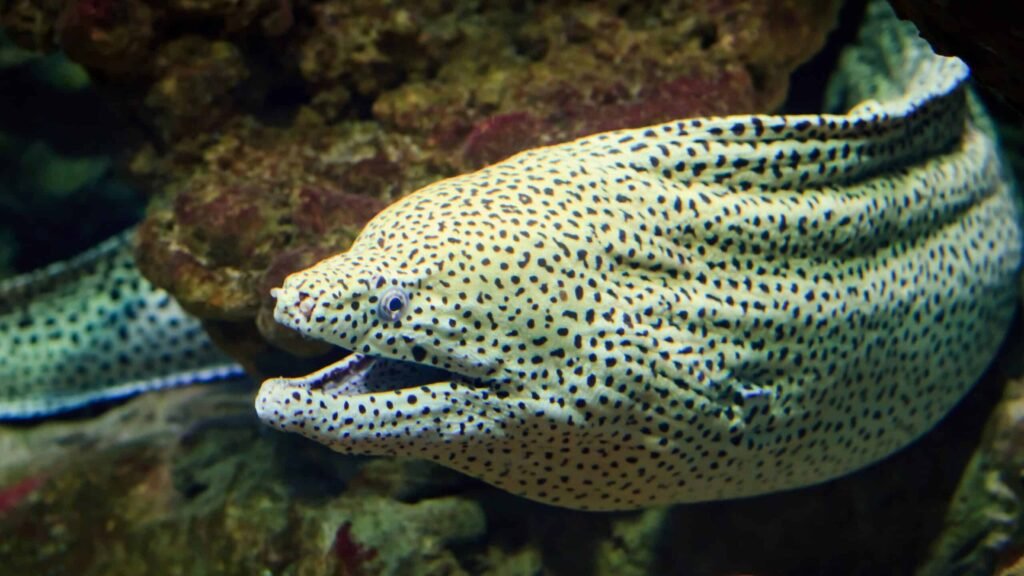
Moray eels, with their elongated bodies and sharp teeth, reside in crevices of coral reefs and rocks. Known for their ambush technique, they patiently wait for unsuspecting prey to swim by before lunging with lightning speed. Their second set of jaws, known as pharyngeal jaws, further assists in pulling prey into their throats, ensuring that few can escape once caught.
Stonefish: The Master of Disguise

The stonefish, found lurking in the shallow waters of the Indo-Pacific region, is masterfully camouflaged to resemble a rock or coral. While primarily a defense mechanism, this disguise also serves to ambush prey. One of the most venomous fish, its dorsal spines can cause excruciating pain and are potentially fatal to humans.
Sea Snake: The Underestimated Threat
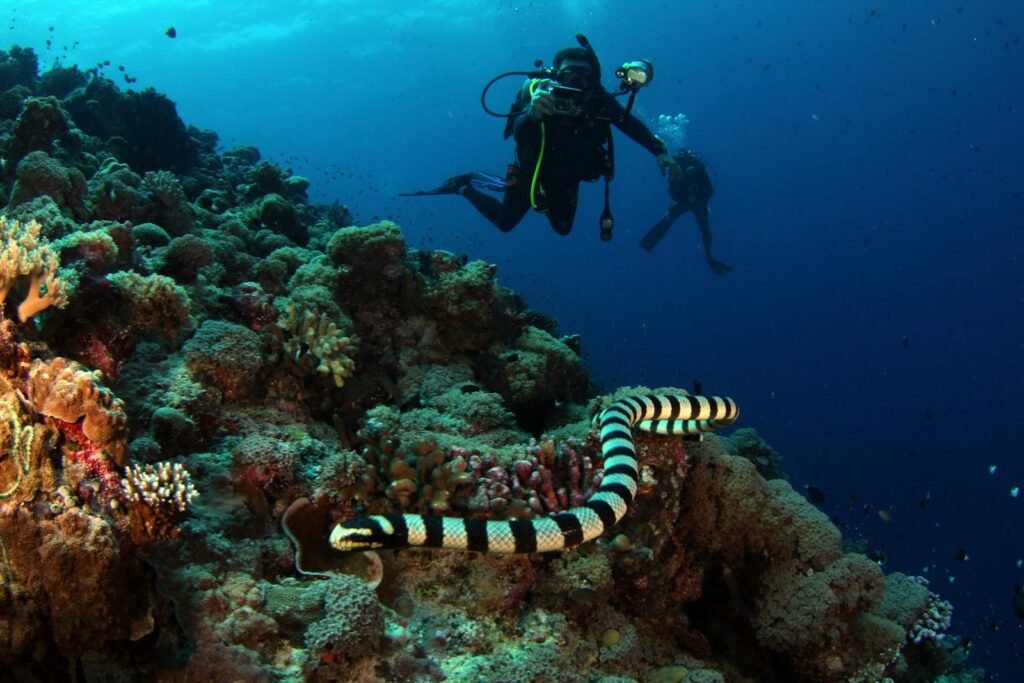
Sea snakes, belonging to the elapid family, possess venom more potent than that of their terrestrial counterparts. They are agile swimmers with paddle-like tails and are found primarily in warm coastal waters of the Indian and Pacific Oceans. Despite their dangerous venom, they pose minimal threat to humans due to their shy nature and reluctance to bite.
Portuguese Man O’ War: A Deadly Collective
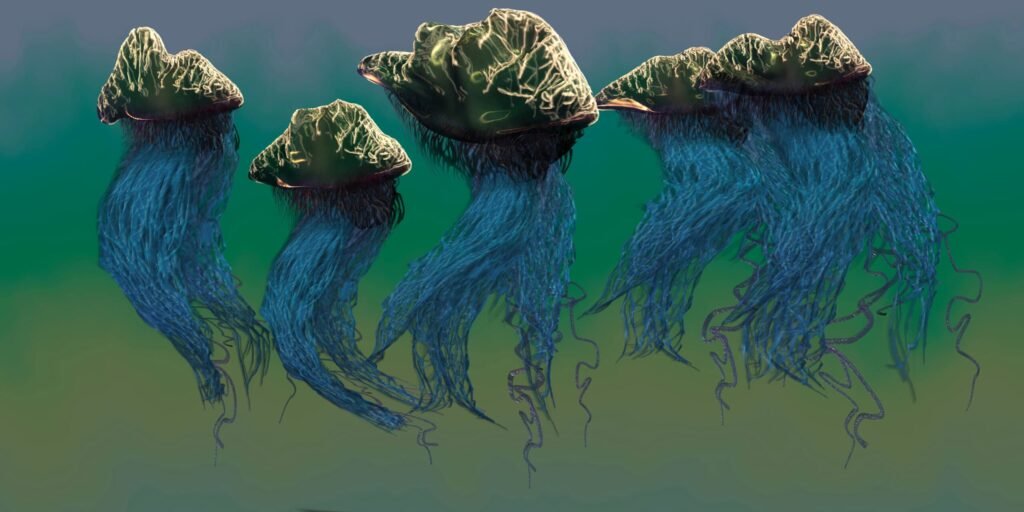
Known for its striking, sail-like appearance above water, the Portuguese Man O’ War is often mistaken for a jellyfish. In reality, it is a siphonophore—a colonial organism made up of specialized polyps. Its venomous tentacles deliver painful stings, paralyzing small fish and other prey. Drifting with currents, its toxin can also cause severe reactions in humans.
Blue-Ringed Octopus: A Tiny Terror

Despite their small size, blue-ringed octopuses carry enough venom to kill several humans. The bright blue rings that appear when threatened serve as a warning sign of their deadly potential. Often found in tidal pools and coral reefs across the Pacific and Indian Oceans, they hunt small crustaceans but will bite in self-defense when provoked.
Fanfin Anglerfish: Luring Prey in the Dark
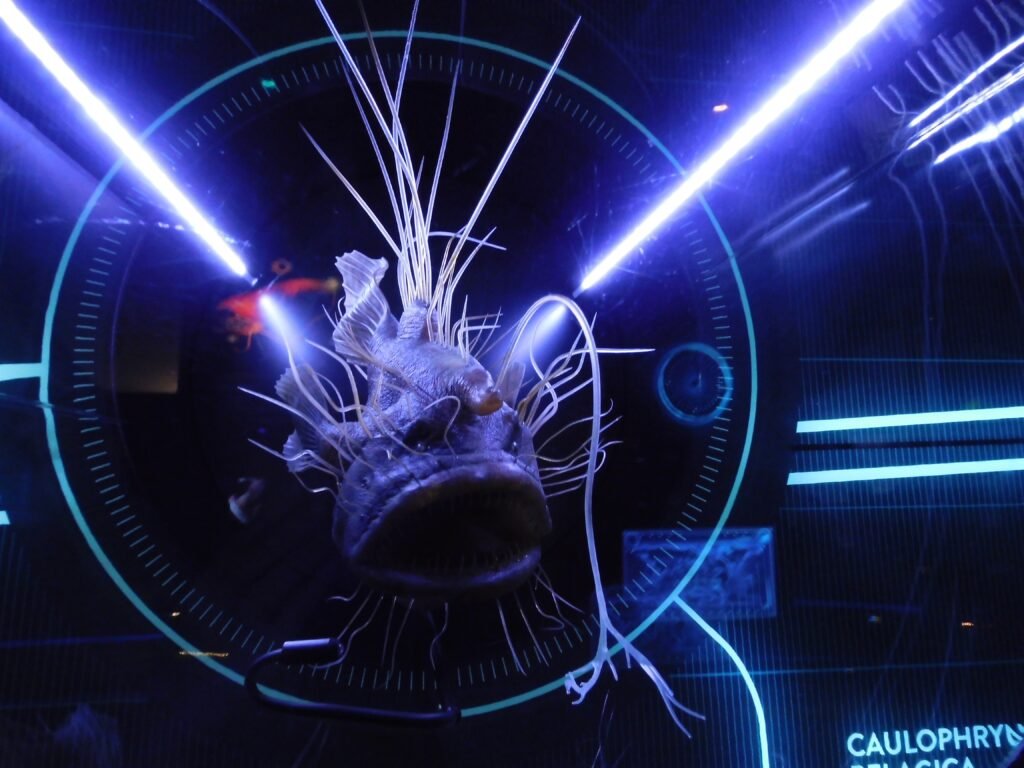
Deep in the ocean’s abyss, the fanfin anglerfish uses its bioluminescent lure to attract unsuspecting prey in total darkness. The lure, a modified dorsal fin spine, glows to entice fish toward its massive jaws lined with needle-like teeth. This gruesome hunter relies on stealth and surprise to secure its next meal, thriving in an environment where other predators struggle to survive.
Leopard Seal: The Antarctic Assassin
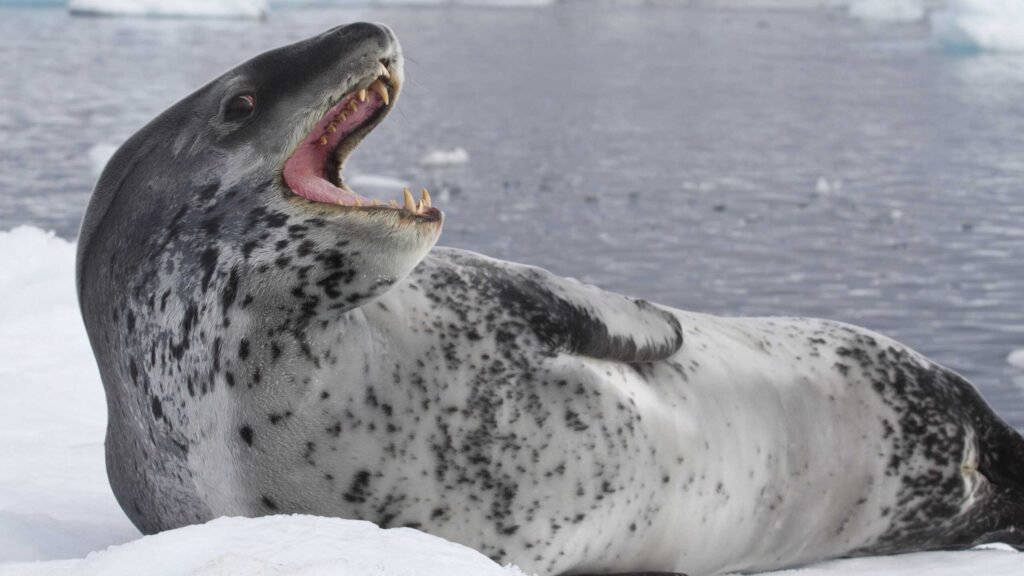
The leopard seal, named for its spotted coat, is a dominant predator in the icy waters of Antarctica. With a robust set of canine teeth, it primarily preys on penguins and other seals. These solitary hunters show remarkable agility in water, using stealth and power to catch prey, often playing with their food before consumption.
In conclusion, the sea is a vast and mysterious place with predators that showcase nature’s ingenuity and adaptability. Beyond the well-known sharks and whales, countless other species exhibit remarkable hunting prowess, making the ocean a fascinating and sometimes perilous ecosystem to explore. These predators remind us of the delicate balance within marine environments and the importance of conserving these incredible creatures and their habitats.



